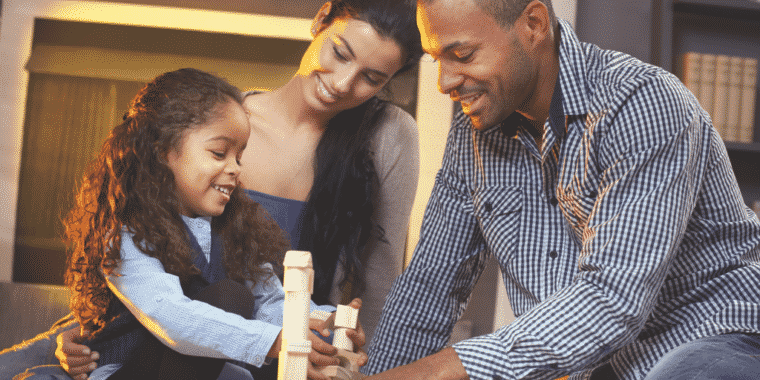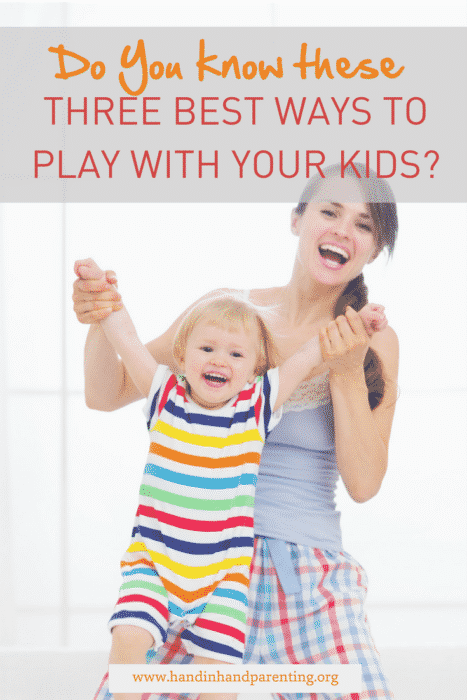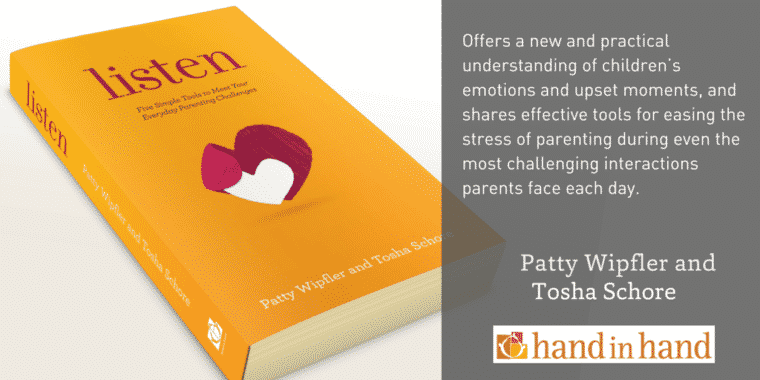![]()
 As they move from play dough to playground and from dress up to dodgeball, it may seem like our children spend their whole day playing. And that's great. But some of the best ways to play will be the play they do with you.
As they move from play dough to playground and from dress up to dodgeball, it may seem like our children spend their whole day playing. And that's great. But some of the best ways to play will be the play they do with you.
We know that play has many benefits for children. Play is crucial for learning, for socializing, for building physical skills, for developing thinking and problem-solving.
Play is also vital for a child's emotional development and can also offer valuable insights into how our child is experiencing the world.
Why Play with Parents is Different
When your child plays with other kids he or she has to play by the rules – even if the game is house and everyone is playing happy families. Children get assigned roles. There may be disagreements around them. Children may pit themselves against a friend or the group, and might have to deal with feeling inadequate. Many times they will deal with losing. Child's play is a lot about fitting in.
This is okay, of course, and must be experienced as children learn to work together.
But playing with parents or caregivers can fill those gaps. This play, together can be a time when a child can dramatise events as she wished they'd gone, or even practise a skill, again and again, in the warm and loving safety of the people they love best. In this play kids can freely enjoy play without expectation or demands and gain different benefits.
 Don't Play By the Rules
Don't Play By the Rules
When you play, try to let your child lead it. By putting your child in charge of play, it means he or she can can direct it just as they need.
Often we, as parents, will never know why a child pushes play in one direction or another, although sometimes there may be hints.
If your child pretends to lock you up in jail and then acts out feeding you “yucky broccoli” a day or so after he tried real broccoli and hated it, you'll have a pretty good idea about the feelings he is working through.
If a child has begun taking a basketball class and is feeling inferior, she might suggest playing a game with you. It's tempting for an adult to teach technique and it's tempting for us to show off our skills too, but maybe a child needs to build confidence around the game. So you play easy and let her get that ball from you. You give her a chance to know how it feels to win. Maybe, she's actually uncomfortable around the basketball itself, so she turns it into a baby and wraps it in a towel!
This isn't ‘basketball practice' as we know it, but perhaps that isn't why she picked up the basketball in the first place. You'll know play is successful by how much she wants to play – if she becomes frustrated or disinterested it means that this play isn't working for her. If she is happy and laughing, you are on the right track, because laughter melts away fear and tension.
Following your child's lead in play may take you to unexpected places, but trust that however vague or odd it might seem not ‘playing by the rules' will be valuable.
Three “R's” of Good Play
These three ways to play with kids help builds their resilience, their confidence and their connections to us. Regular sessions of these three types of play give ample opportunity for kids to play through their worries and insecurities. When your child is happy, delighting in your company and letting out laughter, you know you are playing the best play there is.
Roleplay – Pretend play is more than taking on characters. Roleplay envelops a child in new worlds that actually help him process his own. Through roleplay your child might repeat a recently happened or upcoming event, like a first day of school or a trip to the doctor, where your child will become teacher or medic.
Roleplay might replay a story from a movie or cartoon that is fascinating your child at that time, and he might focus on scenes that are hard to digest or he doesn't understand.
Roleplay may be a version of something played or seen played elsewhere, and where your child takes on the role he wanted then but wasn't allowed to.
Whenever you can, take the least powerful role. Let your child be the victorious superhero, and you his incompetent enemy. Pretend that it's you who is afraid of the ear-nose-and throat exam that your child, playing doctor, wants to give you. Following your child's lead lets the play go where it needs to, like this child did testing her mom on science facts.
Rough Play – Horsing around gives multiple benefits. Physical touch gives an instant connection boost between you and your child, and lets kids work through the fears and disconnection. Unchecked, these feelings can often otherwise show up as off track behavior or aggressive behavior.
These games can be as simple as challenging your child to push you beyond a crack in the floor-tile, or off the sofa, and will help build your child's confidence. The strength they use help expel any niggling fears or uncertainty that might have mounted.
Other rough-housing ideas? Kids love to see you fall, slip or get lost finding them in chase or hide and seek, which puts them in a gleeful place of power, while a good pillow fight is a great game to use to kiss goodbye to stress before bed.
Reverse Play – This kind of play helps children face the anxieties that can cause their sticky behavior. In it, you set up situations that have affected your little one and re-work them towards more positive experiences. You might take on your child's role, or you might assign that to their toys.
One mom in this story uses toys that pee-pee everywhere to help her child laugh at his aversion for potty training. Another mom we know played around with getting shots with her daughter, who was scared of them. The child play injected her mom with a “magic injection” that made her turn cartwheels across the room. You can read about it in Vaccination Fears? Play Can Help.
Reverse play can address almost every challenging parenting situation, from concerns about sleep to worries about separation.
We call playing in these ways Playlistening. Used often, they help build warm, fun times into your day-to-day parenting. Playlistening is one of five powerful parenting tools that parents can use to connect often with children. Read about them all in Five Connection Tools That Will Transform Your Parenting.
Now you can get our book Listen: Five Simple Tools To Meet Your Everyday Parenting Challenges on Audio. See how it sounds here with this free chapter: Listen to Listen now
